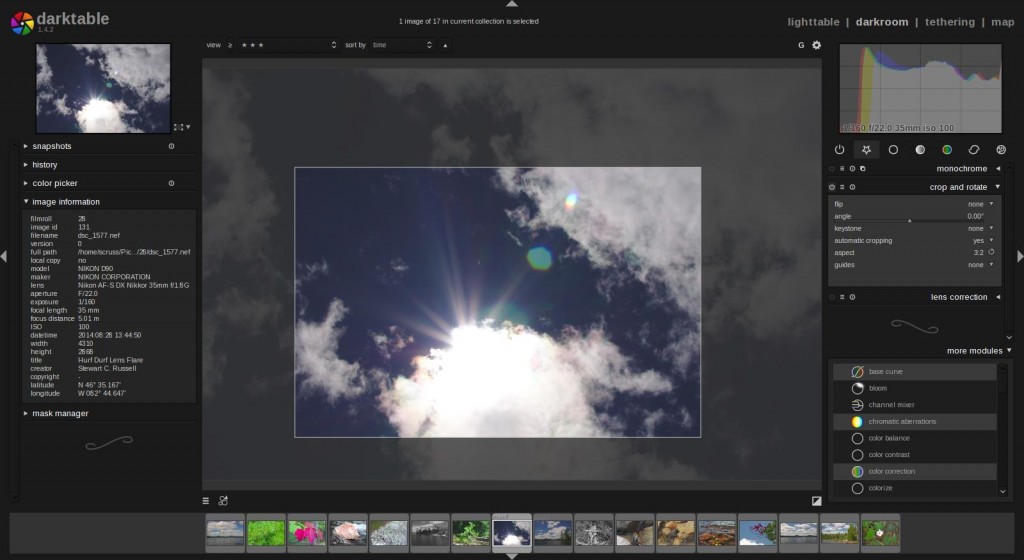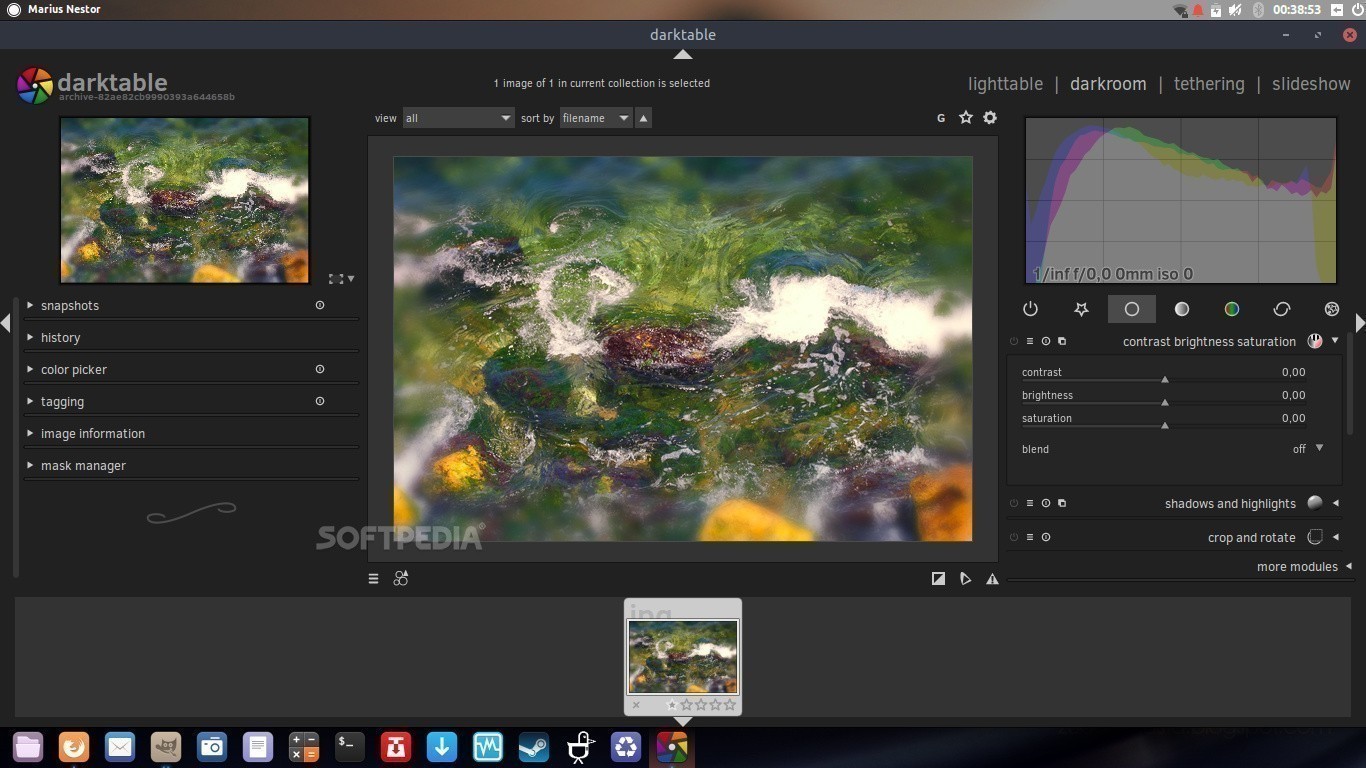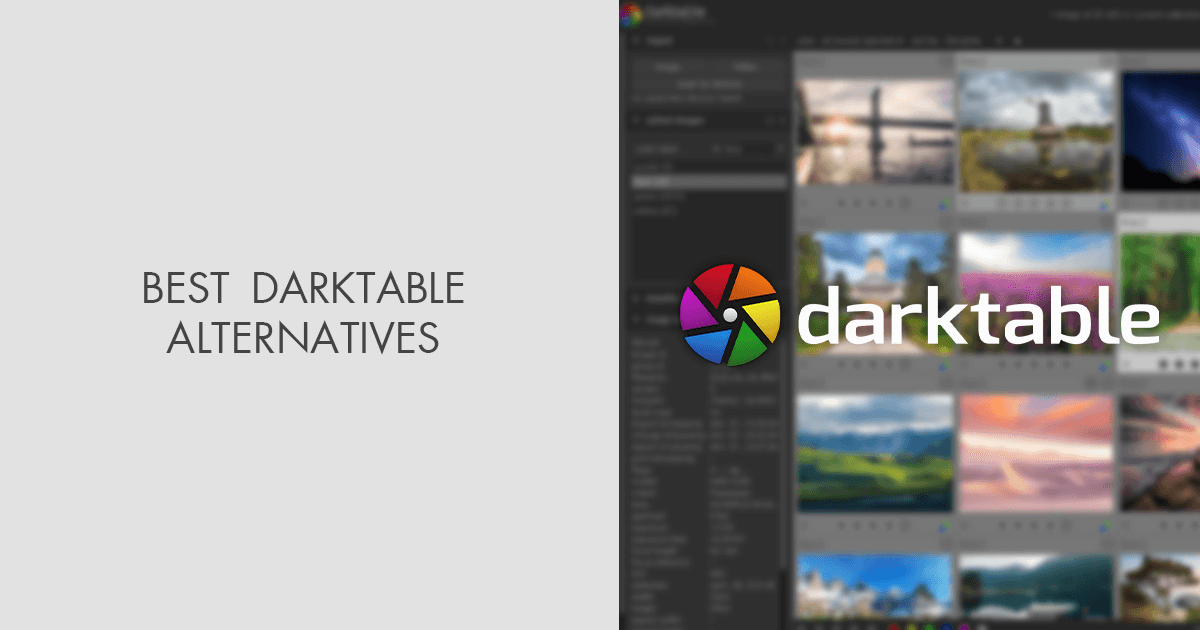
Those looking for a “quick start” guide on the application can find relevent resources here.

The latest (3.6) release of the Darktable photo editor can be downloaded on the Darktable website or via the project’s GitHub. Darktable says the feature uses a similar algorithm to the one used in the dual demosaic feature. To add the images from the new location back to darktable, you need to re-import them manually as if they were new images. it possible to see a thumbnail without having to decode the whole image. There is no simple click-a-button solution but darktable ships a shell script purgenonexistingimages.sh to remove all non-existing images (aka the images that have been moved) from the database, see the documentation. I export my photos take with Cannon camera in raw to Darktable 3.0. The app also has a new section that has been added to the Color Calibration module that allows users use a color checker chart and a vector-scope has been added to “complement the current histogram, waveform, and parade views.” Additionally, the ability to create and display an opacity mask based on the details or sharpness of an image has been added. I ran a file through Darktable, applied some filters, then exported the JPEG. Images that are already included in the Darktable library are now also flagged and can be automatically excluded from the import to prevent any accidental duplicates. If you want to export multiple images at once, you can press and hold the CTRL button on your keyboard while selecting the images you want to export with your mouse. Then, select an image you want to export. To export images in Darktable, you need to be on the lighttable mode. If I delete the cache I would have to run it overnight to recreate everything.I have several thousand images in the lib (not sure exactly how many) and the issue only affects one folder. Even if I click z it will zoom with corrected image but the small thumbnail will still be wrong. I would be grateful if someone could confirm whether the above behaviour is expected and if so, what would be a suitable work-around.The company has also stated that it has made large improvements to the import module, and it now allows users to see thumbnails of their images before the import and makes it easier to handle multiple import tasks. In Darktable, you can export multiple images at once. My thumbnails are still broken so yes - I can observe it over and over. By contrast, if I load a JPEG file from the camera into GIMP, both tags are set to sRGB and there is no problem with thumbnails. This is obviously unsatisfactory in itself, but owing to the tag remaining as Uncalibrated, I cannot be sure the image has the sRGB profile embedded. Curiously, this does not change either of the two ColorSpace tags above. I have found the only way to show the thumbnail correctly in Gwenview is to reload the JPEG into GIMP, ensuring that the option to promote imported images to floating point precision is unchecked, specifically assign the GIMP built-in sRGB profile, then re-export as a JPEG. To add to the doubt, the Gwenview image viewer, while it shows the full-sized image correctly, displays the thumbnails much too dark. I have been advised that some images that I sent out as JPEG files did not contain an embedded profile, although GIMP's Image Properties insist that they have the GIMP built-in sRGB. The Colorspace information for the image that Darktable exports shows up in Image -> Metadata -> View Metadata as: In my case my starting point is Nikon NEF files. In most cases the desired final output from GIMP is a JPEG with sRGB profile but I can find no settings which give me confidence that this is working properly. This is logical since it is desirable to work with floating point precision in GIMP 2.10.

When using GIMP's Darktable plugin, I think I am right in saying that that closing Darktable always imports the image into GIMP in the form of a floating point EXR file with profile linear Rec709 RGB. This issue refers to GIMP 2.10.8 and Darktable 2.4.4, running in Linux (KDE). Click once on any thumbnail then press Ctrl + A to select all thumbnails. I now believe this to be a GIMP issue, but I cannot be sure whether the behaviour described is effectively a bug in GIMP or whether I am missing something. Darktable should now be displaying only unaltered images in the main lighttable view of thumbnails.

I am new to this group, but was referred to it after posting a description of the problem below to the Darktable forum.


 0 kommentar(er)
0 kommentar(er)
